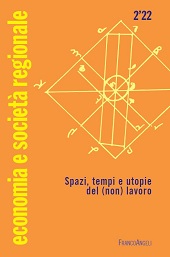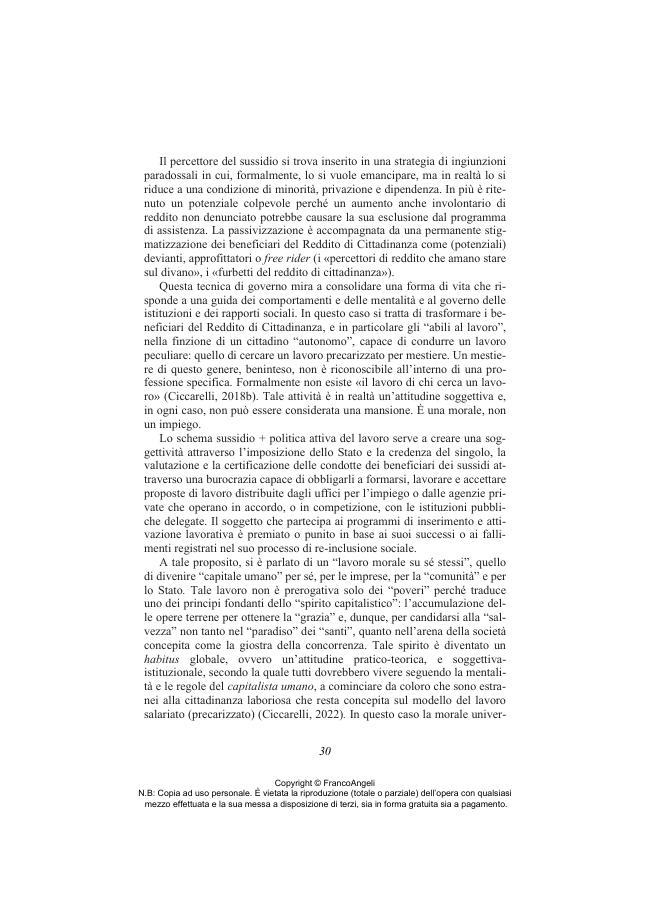Il reddito di cittadinanza in Italia : un caso di rivoluzione passiva
P. 23-36
A tre anni dall'introduzione del Reddito di Cittadinanza in Italia, nel dibattito pubblico non è stato compresa a sufficienza la reale portata di una riforma che vincola, almeno sulla carta, il riconoscimento di un sussidio di ultima istanza a precisi e rigidi obblighi. In questo articolo si forniscono una serie di ipotesi per spiegare questo fenomeno che sarà interpretato sia in termini culturali che politici. Si utilizzerà una categoria ripresa da Antonio Gramsci, quella di rivoluzione passiva, adeguatamente contestualizzata e rielaborata.
Si spiegherà come il reddito di cittadinanza sia configurabile, per come è stato concepito e per come è stato gestito fino ad oggi, nella stessa cornice. In particolare, sarà evidenziato il doppio ruolo svolto da una simile misura: da un lato, essa si muove in una prospettiva di giustizia sociale, ma riconosce un sostegno condizionato nel tempo solo a una parte dei poveri assoluti statisticamente rilevati in base a criteri meramente fiscali; dall'altro lato, evidenzia l'esigenza di un controllo sociale vincolato a un'idea astratta di lavoro e distingue i poveri abili al lavoro da quelli non abili. [Testo dell'editore]
Three years after the introduction of the Reddito di Cittadinanza (an income support measure, improperly called citizenship income), in the Italian public debate, the real scope of this reform has not yet been understood - a reform that links, at least on paper, the recognition of a subsidy of last resort to the precise and strict obligations. In this article we will provide a series of hypotheses to explain this phenomenon, which we will interpret in both cultural and political terms. We will use a category rethought by Antonio Gramsci, that of passive revolution, appropriately contextualized.
We will explain also how citizenship income, as conceived and as it has been managed so far, can be configured in this same framework. In particular, we will discuss the dual role played by this measure: on the one hand, it moves in the direction of social justice, but recognizes conditional support over time to only a portion of the statistically surveyed absolute poor on the basis of purely fiscal criteria; on the other hand, it highlights the need for social control constrained to an abstract idea of work and distinguishes the workable poor from the unworkable. [Publisher's text]
Ist Teil von
Economia e società regionale : 2, 2022-
Artikel aus derselben Ausgabe (einzeln erhältlich)
-
Informationen
ISSN: 2038-6745
KEYWORDS
- Welfare, workfare, politiche attive del lavoro, reddito di cittadinanza, reddito di base, povertà, inclusione sociale
- Welfare, Workfare, Active Labor Policies, Citizenship Income, Basic Income, Poverty, Social Inclusion



